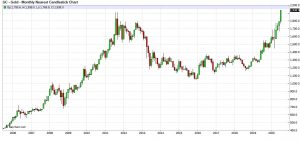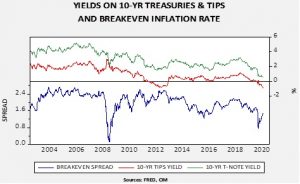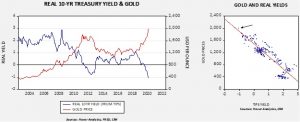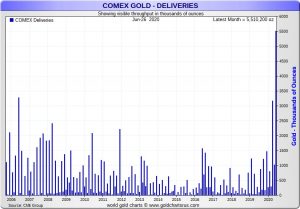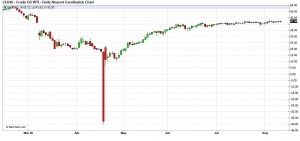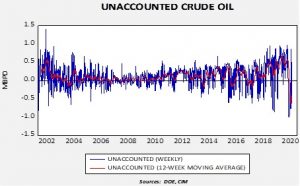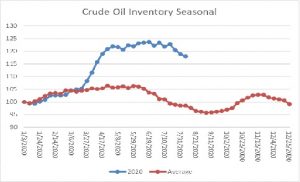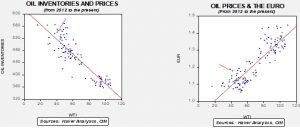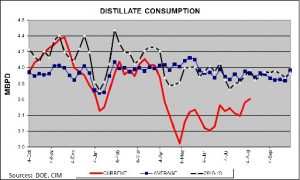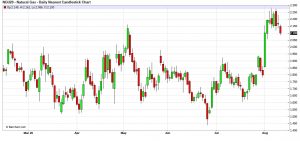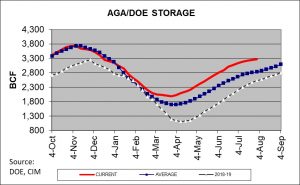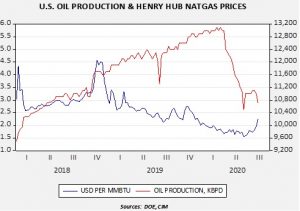by Bill O’Grady, Thomas Wash, and Patrick Fearon-Hernandez, CFA
[Posted: 9:30 AM EDT] | PDF
On this, the 29th anniversary of the August 1991 coup in the Soviet Union, it looks like the U.S. equity market will follow through on its rise yesterday to a new record-high close. Today’s apparent follow-through comes despite very little coronavirus news…or perhaps because of it? Most of today’s key news is political, as we outline below.
China: President Xi has reportedly launched a major purge of the country’s security personnel. Since the purge commenced last month, dozens of high-level police and judicial officials have been arrested, fired, or sent for “ideological training,” including the Shanghai chief of police. Xi has often purged officials in order to stamp out corruption or remove opponents and overly ambitious rivals, especially early in his tenure. However, reports indicate this purge is much more sweeping.
- Some commentators suggest the new firings merely represent another anti-corruption effort, but it’s likely that such a broad move also reflects growing political opposition against Xi within the Communist Party establishment.
- That opposition is hard to see from the outside, but various reports by knowledgeable China observers, including former Australian Prime Minister Kevin Rudd, indicate Xi has generated considerable discontent within the Communist Party for several of his policy initiatives. For example:
- Many party officials dislike Xi’s abandonment of collective rule and his attempt to build a cult of personality in which he alone holds all power as an autocrat.
- Xi’s reputation has also been heavily damaged by his failure to keep a lid on the novel coronavirus when it first surfaced last year.
- Xi has generated pushback against his aggressive geopolitical moves in places like the South China Sea and the Himalayas. Those moves represent an abandonment of Deng Xiaoping’s dictum to “hide your strength, bide your time.” Many Communist Party officials are probably also uncomfortable with Xi’s failure to avoid an economic, political, and technological conflict with the U.S. In simplistic terms, these concerns center on the possibility that Xi has misjudged China’s strength and has embarked on moves that are generating strong pushback from the U.S. and other Western democracies before China really has the power to follow through on them.
- If the purge really does turn mostly on Xi’s need to stamp down burgeoning internal political opposition, his past success with purges suggests he will probably be successful. All the same, if the breadth of the purge reflects how broad the political opposition has become, it also raises the risk of political instability at some point in the future. That possibility, in turn, suggests that one thing missing from current U.S. policy toward China is an effort to play to Xi’s opponents, perhaps by offering a softer policy again if Chinese geopolitical or economic policy becomes less aggressive.
- In any case, if Xi’s opponents were to gain power and the country became politically unstable, it would naturally be disruptive for global markets. On the other hand, increased opposition to Xi overseas and a burgeoning political opposition at home could chasten Xi and lead him to cool his geopolitical and economic ambitions, at least temporarily. That reaction might help cool global tensions and create a more favorable investment environment.
United States-China: As if to illustrate the U.S. pushback that Xi’s policies have generated, President Trump said he ordered the cancellation of last weekend’s planned U.S.-China meeting on the implementation of the “Phase I” trade deal, which the countries signed in January. His administration has also urged university endowments to divest their holdings of Chinese stocks ahead of the companies potentially being delisted from American exchanges. Those developments help explain today’s drop in the Chinese and Hong Kong stock markets.
Japan: Just months after his last regular checkup, Prime Minister Abe unexpectedly spent an entire day in a Tokyo hospital this week for unspecified medical tests. Abe only has one year left in his final term as leader of the ruling Liberal Democratic Party, but the visit has led to growing speculation about his political future. It also intensified maneuvering by his rivals for the chance to succeed him. His main potential successors are Fumio Kishida and Shigeru Ishiba, both former ministers and leaders of party factions. Separately, the Democratic Party for the People is expected to approve a merger today with the Constitutional Democratic Party of Japan, forming a more organized, numerically viable opposition to Abe and raising the prospect of snap elections.
Canada: A day after his previous finance minister quit, Prime Minister Trudeau named his deputy, Chrystia Freeland, as the country’s new finance minister and said he would suspend parliament until September 23 in order to develop a new plan for addressing the coronavirus pandemic and economic recovery. That plan, which Mr. Trudeau hinted would include aggressive spending measures, would be subject to an immediate vote, giving the opposition parties—which hold a majority of seats in the legislature—a chance to defeat the Liberal government and trigger an election.
United States: The Democrats formally nominated Joe Biden as their candidate for president last night. Biden is expected to formally accept the nomination in a speech on Thursday.
United States-India: Although Biden’s choice of Kamala Harris as his vice presidential running mate has excited many Indians, given her Indian heritage, reports say the Indian foreign policy establishment is becoming apprehensive about how a Biden-Harris administration might respond to Prime Minister Modi’s aggressive Hindu nationalist agenda, which has deeply alienated the country’s Muslim minority.
United States-Russia-China: After two days of U.S.-Russia meetings on extending the New START nuclear arms treaty, which is due to expire in February, administration officials signaled they are no longer insisting on China’s participation in a follow-on deal. The change of approach should help ensure that the key arms limitation agreement will be extended.
European Union-Belarus-Russia: Ahead of today’s emergency EU summit to discuss the political crisis in Belarus, Russian President Vladimir Putin warned German Chancellor Merkel and French President Macron that he would not tolerate any outside pressure on the Belarusian leadership. At the meeting, EU leaders are expected to discuss imposing sanctions on Belarusian leaders and officials who oversaw the recent election and the brutal response to the initial protests, which led to thousands of people being detained.
Mali: Renegade soldiers in Mali detained President Ibrahim Boubacar Keita, Prime Minister Boubou Cisse, and dozens of other senior officials in what appeared to be a coup attempt after months of civilian demonstrations calling for the government’s resignation. Keita soon acquiesced in the takeover and announced his resignation. According to the military, a transitional government will now be set up to rule until new elections.
COVID-19: Official data show confirmed cases have risen to 22,169,145 worldwide, with 781,575 deaths and 14,138,936 recoveries. In the United States, confirmed cases rose to 5,482,823, with 171,833 deaths and 1,898,159 recoveries. Here is the interactive chart from the Financial Times that allows you to compare cases and deaths among countries, scaled by population.
Virology
- Newly confirmed U.S. infections continue to show signs of moderation, but more universities and colleges are having to backtrack on their plans for the school year as they deal with a surge of cases on their campuses.
- At Notre Dame, where students were already back on campus and attending classes in person, a surge of infections spurred by off-campus parties prompted the school to move to online classes only for at least two weeks. The administration also warned that if the outbreak isn’t contained quickly, the school will send students home to learn remotely, similar to the campus closure that happened last spring.
- At Michigan State, an outbreak of cases prompted the administration to ask students not to return to campus just yet.
- Responding to the resurgence of infections around Europe, German Chancellor Merkel said her country would stop easing virus restrictions for the time being. The comments serve as a reminder that Europe’s encouraging recovery to date remains fragile, since failure to keep easing restrictions could short-circuit the recent improvement in activity and in European stocks.
- Speculation continues to rise that the virus could be transmittable via frozen or refrigerated food, with at least one major Chinese city banning the importation of frozen meat from coronavirus hotspots.
U.S. Policy Response
- With the White House and Congressional Democrats still at a stalemate over a new pandemic relief bill, some Republicans in Congress reportedly are considering a pared down “skinny bill” that would cost only about $500 billion compared with the latest White House proposal of approximately $1 trillion and the Democrats’ proposal for a bill worth $3.5 trillion.
- Meanwhile, several states said they sought and received approval for federal disaster funding to pay an extra $300 per week over their normal unemployment benefits as provided for in President Trump’s recent executive orders. However, it appears it will take several weeks for those funds to start being distributed to the jobless.



